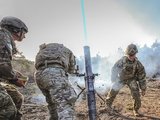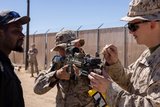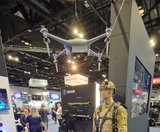Cubic tailors mortar simulator for the US Army
The company’s mortar trainer received improvements based on soldier’s feedback.
Joint Terminal Attack Controller (JTAC) training simulators at the US military's Special Operations Terminal Attack Controller Course (SOTACC) facility will feature MetaVR’s Virtual Reality Scene Generator (VRSG), the company announced on 18 December.
Battlespace Simulations (BSI) is under contract to install two classrooms with desktop JTAC simulators featuring BSI and MetaVR software at the SOTACC facility. The new simulators replace the Call For Fire Trainer (CFFT) simulators currently in use.
The contract calls for two classrooms, each of which consists of eight JTAC student stations, an instructor station, an instructor role-player station, and a NVIS Ranger 47 simulated laser range finder.
MetaVR VRSG, geospecific terrain, and extensive 3D content libraries, along with BSI's Modern Air Combat Environment (MACE) software are the key components of the Windows desktop systems.
Each station also includes a tablet running a ROVER feed of VRSG’s simulated sensor view and a communications suite with BSI’s Viper DIS Radio software to simulate PRC-117, PRC-148, PRC-152 radios. New hardware, including two terrain servers loaded with MetaVR's CONUS++, Asia, and Africa terrain data sets, will complete the package.
VRSG provides out-the-window (OTW) views for the instructor, student, and role player stations, as well as sensor views and the view within the Ranger 47 simulated military equipment. MACE provides entity scenario generation and execution, including call for fire, 9-Line, and 5-Line interfaces as well as the virtual pilot/role player station. BSI's Viper DIS radio provides an operationally realistic communications environment and BSI's DIScord DIS recorder enables after-action review (AAR) and debrief.
SOTACC certifies special forces troops from the US Army, Air Force, and Marine Corps as qualified JTACs. Each four week JTAC qualification course includes three weeks of academic training and one week of live-fire close air support training.

The company’s mortar trainer received improvements based on soldier’s feedback.

The company will operate in two new locations in the coming years to better support US services.

This type of tool provides more realistic training easing the incorporation of new scenarios that accurately represent the threats of the battlefield.

The Engineering Corps has been conducting individual instruction using FLAIM Systems’ Sweeper and should start collective deployments in 2025.

The next-generation platform is motion-compatible and can be used in OTW and NVG applications.

The system can be used to prepare soldiers for both drone offensive operations and CUAS missions.